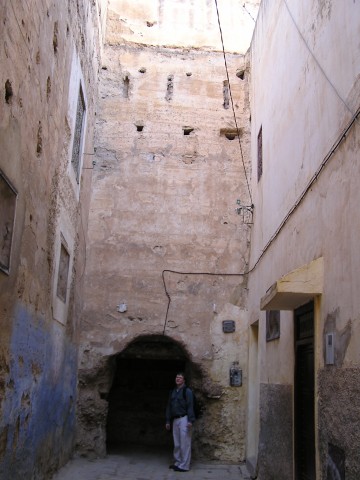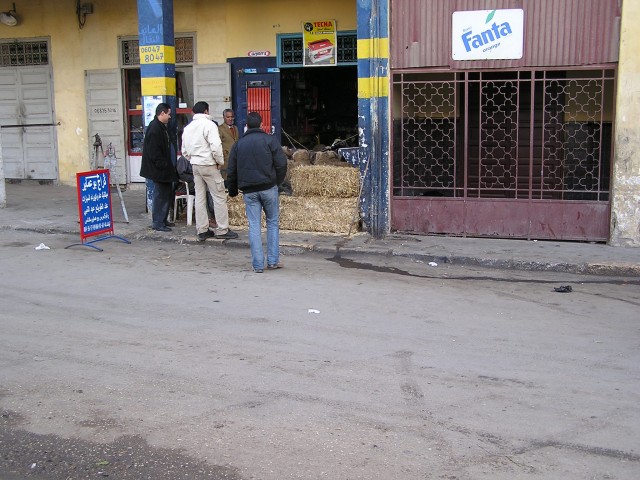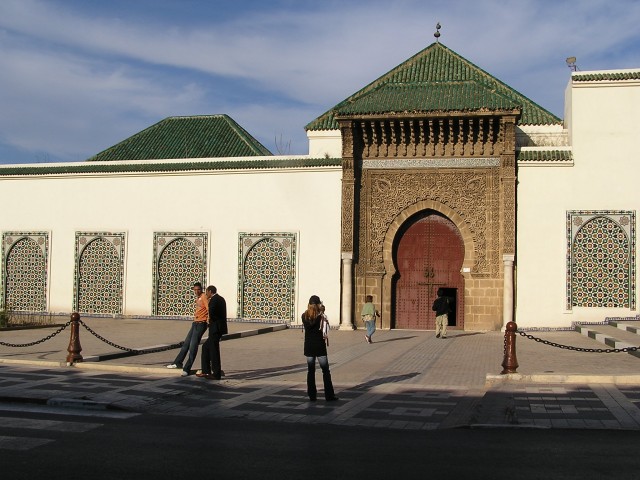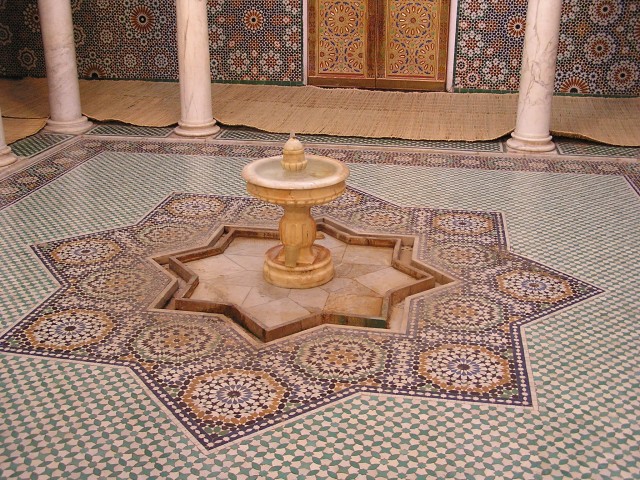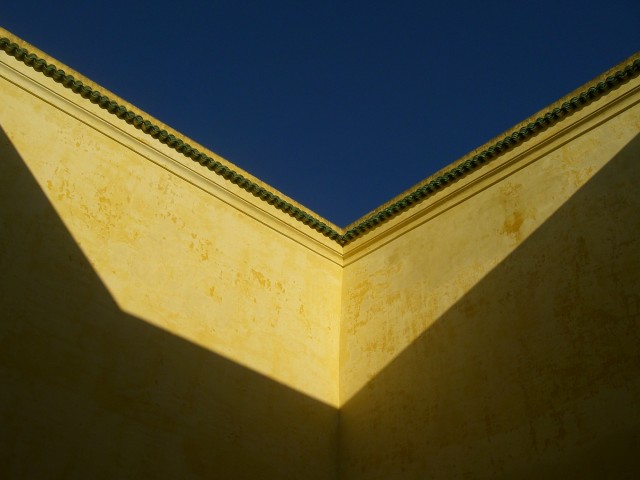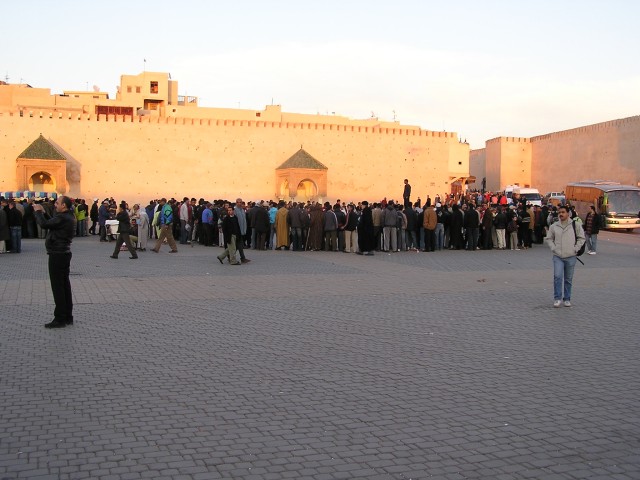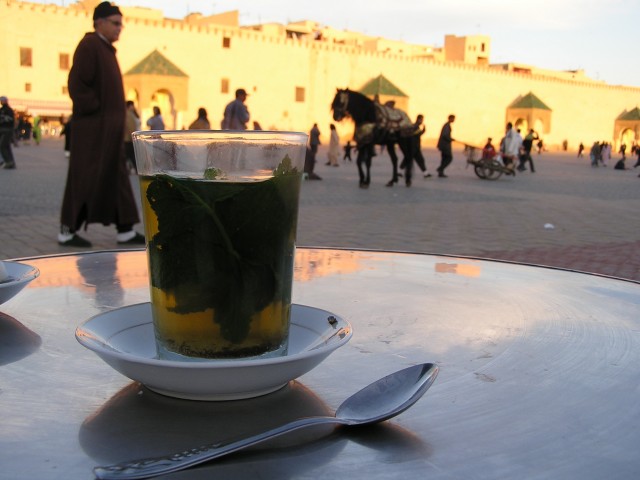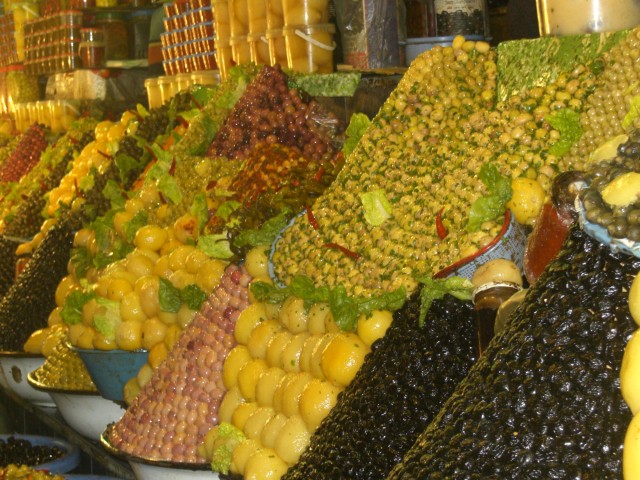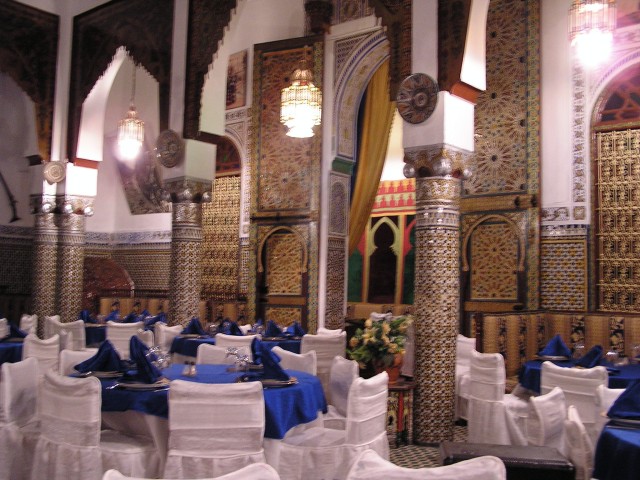|
This shot from outside the town wall gives a sense of how the
houses and streets are squeezed on top of each other. It makes it quite
easy to get lost. NO STREET SIGNS - anywhere in Morocco! |
|
Once inside the medina, we find ourselves overshadowed by century
old buildings. Narrow lanes and very tall walls can make the experience
almost claustrophobic. This dark doorway leads us to many gloomy dead-end
alleys. It takes about 45 minutes to get back to this point. |
|
There are shops pretty much everywhere - including a place
where you can pre-order sheeps! These sheep are foreshadowing for our later
adventures. |
|
We see many people in many places sitting and observing. Everywhere
- in the city, along the road, in the villages, etc. Sitting is totally
the IN thing to do. |
|
We stumble on the Mausoleum of Moulay Ismail. Beautifully carved
doors & door frames are a common sight. Decorated doors with specific
symbols protect the home by keeping spirits away. |
|
Intricate tilework is everywhere! The 8-pointed star is a common
symbol that you see embedded in everything - including sidewalks, etc. The
star is generally associated with Islam. We also see a lot of 5-pointed
stars - this is associated with the flag of Morocco. |
|
Pretty picture capturing the cloudless blue Moroccan sky contrasting
with the ubiquitous yellow walls. |
|
After more scouting, we find the medina. A medina is typically
the older part of the town. It has a square where people perform some type
of service or show and ask for money. In this case, a group of people are
doing acrobatics. |
|
We join the "sitting" tradition and take our first mint tea.
This is the national drink. Mint tea is often called Berber Whiskey, since
most Moroccans do not drink alcohol.
Notice a few things in this picture:
Man on the left is wearing a Berber
cloak (Justin got one). The cloaks can be in any color-brown, green, red.
Horses and donkeys are common modes of transportation
The small cart is used everywhere to transport items in the medina.
Cars can not fit in the narrow alleys.
The walls enclose the medina and sometimes the entire town. |
|
You can buy just about anything in the medina, including fresh
chickens. When I say fresh, I mean *really* fresh. They weigh 'em, kill
'em, de-feather them and hand them to you. |
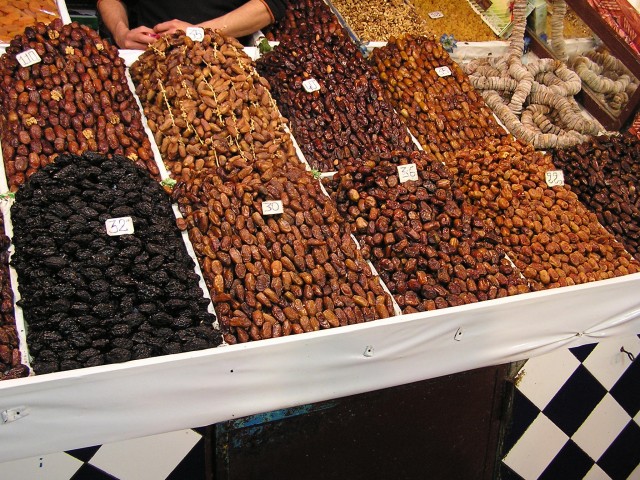 |
Also for sale are fresh dates and prunes. |
 |
... and goat heads! |
|
... and olives, lots and lots of olives!
STORY:
As we walked in the medina, a "friend" talked to us. He told us he "wasn't a guide" and "didn't want any money."
He claimed that he was a psychology student (note: we encountered the exact same story in Thailand!)
He took us around to a "professor" who was going to teach us about rugs.
Of course, when we said "enough", he asked for money. All of a sudden, a man with a black leather jacket came along and started yelling at our "friend" in Arabic.
Someone explained that the man was a tourist cop. |
|
We had dinner at the Restaurant Zitouna (phone - 055-530281).
It took us at least 45 minutes to find the restaurant. We were the only
guests in what used to be a "palace" (house). The center of the house is
a covered courtyard. We had our first exposure to the tajine
- the most common
staple of Moroccan cuisine. Although tajines are quite good - their
flavor is subtle and hearty, not spicy.
The service was performed by two men - the owner and another man, probably
a family member. It was explained that all the cooking was done by the
women. I don't recall ever seeing a waitress in Moroccan restaurants -
all service is performed by men. |

